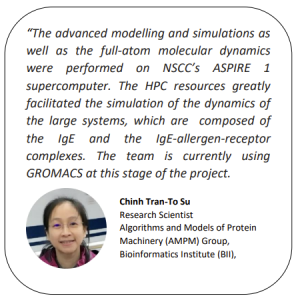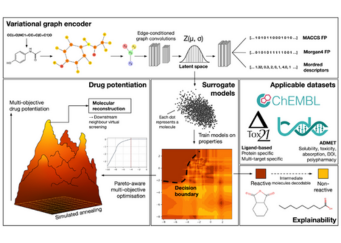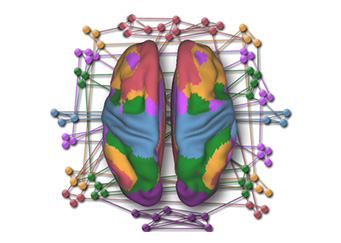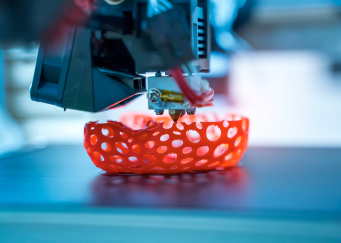Researchers from A*STAR leverage high-performance computing (HPC) resources to develop advanced structural model and simulations of the interactions between antigens and allergens.

Food allergies are a common health problem worldwide. It is estimated that nearly 5% of young children may be affected by allergies in Singapore. In particular, allergy to peanuts is a growing top trigger of severe allergy in children.
The mechanism that triggers a peanut allergy involves biological components and their interactions. These components include the human antibody IgE, peanut allergens, and IgE’s partner receptors on mast cells. Disrupting these interactions could intervene with severe allergic immune responses.
A team of researchers from A*STAR’s Bioinformatics Institute (BII) are conducting in-depth studies on these IgE interactions at a molecular level by combining computational modelling and experimental validation. The team aims to find out how changes to the IgE structure can affect peanut allergies and the potential for the results to be used for therapeutic purposes and allergy intervention. The molecular complex of interest includes IgE, the antigen (peanut allergen, e.g. Ara h1) and the FcεRIα (IgE receptor). Since most available crystals and current nuclear magnetic resonance (NMR) data of these structures are mostly truncated forms and submodules, the team’s objective is to characterise the conformational changes that the IgE undergoes upon binding to the FcεRIα and the peanut allergen separately, and together.
“The project aims to develop a holistic understanding on the structural model of the whole peanut allergen-IgEreceptor complex,” said r Chinh Tran-To Su, the Principal Investigator (PI) for the project. “This is done via the combination of advanced structural modelling and the latest cross-linking Mass Spec (XL-MS) technology.”
The project team hopes that the holistic analysis of IgE interactions would benefit future allergen-specific IgE studies and the engineering of therapeutic by enhancing the understanding of the role of IgE in allergy pathogenesis.
To find out more about the NSCC’s HPC resources and how you can tap on them, please contact [email protected].
NSCC NewsBytes July 2022
Other Case Studies
Advancing Drug Discovery Research using NSCC HPC resources
Researchers from Nanyang Technological University (NTU) are applying variational graph encoders as an effective generalist algorithm in computer-aided drug design (CADD)....
Gaining Deeper Insights into Mental Disorders through Brain Imaging and High-Performance Computing
Researchers from NUS are leveraging supercomputing to develop better strategies for prevention and treatment to mitigate the impact of mental illness. The human brain is a marvel...
Using Digital Twin Technology to Optimise the Industrial 3D Printing Process
Researchers from the Institute of High-Performance Computing (IHPC) are utilizing supercomputers to create a digital twin that furnishes users with comprehensive information...


